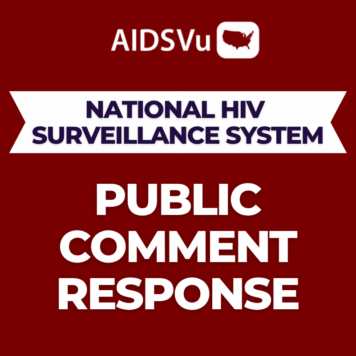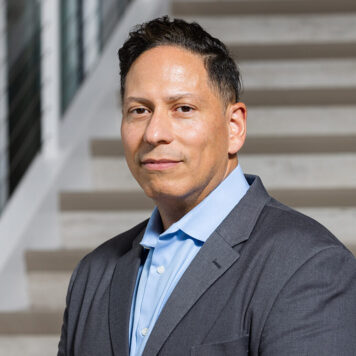Anne Neilan, MD, MPH is the Co-Director of Harvard University’s Center for AIDS Research (CFAR) Adolescence and HIV Scientific Working Group and one of Harvard CFAR’s Executive Committee Members. She is also an Assistant Professor of Medicine and Pediatrics at Harvard Medical School and is an Assistant Pediatrician at Massachusetts General Hospital.
Q: Your clinical research interests include informing policy-relevant care strategies for young people with HIV and at risk of HIV. How did you become interested in this research subject?
I trained in pediatric and adult medicine, and I was really drawn to the adolescent population who sometimes experience poor health outcomes as they transition from pediatric to adult settings. The medical system is often individually well set up for kids and adults, but not necessarily well set up for those moving in between those two life stages. That is particularly an issue for adolescents with chronic health conditions.
Q: Harvard University’s Center for AIDS Research (CFAR), where you are an Executive Committee Member and Co-Director of the Adolescence and HIV Scientific Working Group, is devoted to responding to the needs of the HIV community and educating HIV researchers. What do you think researchers are getting right about HIV among this age group and what do you think they’re getting wrong?
Research networks like the Adolescent Medicine Trials Network for HIV/AIDS interventions have done an amazing job of tailoring interventions to youth and involving relevant communities at each stage of the research process from design through dissemination. There are plenty other research networks that are great examples of that as well, like PHACS and IMPAACT. I think it’s amazing that, today, we really do have all the tools like effective prevention and effective treatment to end HIV for youth. It would be great to see a focus, particularly as the Office of AIDS Research (OAR) develops its next strategic plan, on implementing our pre-existing tools and engaging the relevant communities. It’s really unacceptable that, for example, a young person today can become infected without never having heard of PrEP. So, there’s a lot going on right now and a lot of opportunities to do better.
Q: According to 2020 CDC data, HIV stigma is the highest among young people. In your opinion, what do you think is the most common misnomer/misinformation regarding youth HIV?
A lot of stigma extends from misinformation. The treatment of HIV has been one of the greatest success stories of my lifetime – things have really changed since the late 1980s. When a young person first learns of their diagnosis and comes into my office, I always emphasize that if you take your medications, you can live a long and healthy life – you can have children without HIV, and you won’t give HIV to your intimate partners. I don’t think these messages are universally known, even among individuals in the medical community. Additionally, there is both internal and external stigma. Youth with HIV may acquire HIV around the time of birth or may acquire it later. There is a lot of individual variation in terms of how youth may experience stigma. Particularly for youth who have acquired HIV later in life, it is crucial to normalize sexual health discussions in multiple settings to improve stigma.
Q: Your paper, “Modeling Adherence Interventions Among Youth with HIV in the United States: Clinical and Economic Projections,” examines methods for increasing adherence to improve viral suppression among youth. What do you think is the best way to increase adherence, and what are the benefits of increased adherence among youth?
One general misconception is that youth have poor adherence just because they’re teenagers. It’s hard to be a teenager, and that certainly is a factor for many. But our health systems need to do better; youth need choices and health systems that are more responsive to their needs. One of my patients recently shared with the National Advisory Child Health and Human Development (NACHHD) Council his difficult experience with obtaining injectable medications after he moved out of state for college. That’s a pretty unique barrier for youth. In terms of ways to improve adherence, a lot of the responsibility falls on the health system. We’ve come a long way in terms of effective medications. The recent Conference on Retroviruses and Opportunistic Infections (CROI) really highlighted how much further we need to go. Formulations are less palatable for younger adolescents and children – studies needed for regulatory approval are often slower than those of adults. Novel delivery approaches hold a lot of promise for youth. It’s important to remember that people don’t fail drugs – drugs fail people. Youth thrive with the acknowledgement that they are more than just their virus, and through holistic care outside of viral suppression. Adherence matters for improved individual health. When the HIV virus is well controlled, there are implications for onward transmission. There are higher risks of onward transmission to others if the virus is not suppressed – so there are both individual and population considerations.
Q: April 10 is National Youth HIV/AIDS Awareness Day, tasked with raising awareness about HIV’s impacts on young people across the United States. What would you like to communicate to youth who are living with HIV or are experiencing stigma around HIV?
I want to bring to light the gap specifically for minors at risk of HIV and with HIV. Minors face legal barriers that vary by state, which is really important to highlight because while research often considers social determinants of health, fewer analyses are able capture these legal variations. The CDC has a terrific resource on minor consent laws. The age of majority varies by state, and the age of consent for different services varies by state – all of which are enshrined in different laws. For example, only in was there a specific provision stating that PrEP could be given to minors in Massachusetts. Most states permit treatment of sexually transmitted infections, but prevention is not the same as treatment. So I think it is crucial to highlight that. To the youth HIV community itself, I want to communicate gratitude to the youth that I’ve had the benefit of working with through their time and insights. I also want to spread the message that we need more diverse people – in every sense of the word – involved in healthcare and research to really solve the formidable issues we continue to face.




